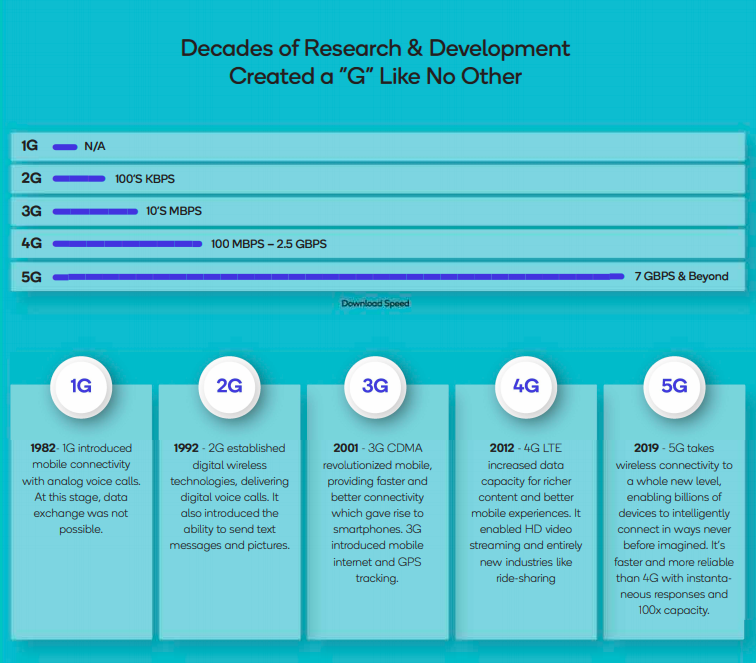How Is 5G Different Than 4G?

An epic shift in connectivity
The fifth generation of wireless will redefine and expand the ways we connect with each other, our devices, and the world around us. 5G will create a universal fabric of connectivity that weaves everyone and everything together like never before.
- Virtually no "Lag Time": Latency is the term commonly used to describe communication delays within a network. With 5G, data will travel almost instantaneously, enabling mission-critical connectivity and in-person like virtual experiences. Autonomous vehicles, cloud-based work collaboration, and virtual reality are just a few examples of what's possible because of 5G's ultra-low latency.
- Lightning-Fast Speeds: 5G isn't just faster than 4G... it's up to 10 times faster! This kind of speed will open the door to new possibilities, like 8K video streaming, immersive remote learning, and countless applications that haven't even been imagined yet.
- 100x More Capacity: Qualcomm invented new and creative ways to utilize more spectrum, delivering more network capacity and bandwidth. Thanks to groundbreaking technologies like Massive MIMO, beamforming, and the use of mmWave, 5G can handle 100 times the traffic of 4G. This new capacity will enable billions of new devices to connect.
- Expanded Access: 5G is key to closing the connectivity divide. Networks utilizing mmWave - a frequency band made viable for the first time in 5G - will provide an affordable alternative to traditional fiber connections to address the last-mile gap in rural areas. It will help redefine agriculture, education, and healthcare for these communities.
More Connectivity. More Opportunity.
- Enabling A Broad Set of Industries: In 2035, when 5G's full economic benefit should be realized across the globe, a broad range of industries could produce up to $13.2 trillion worth of goods and services enabled by 5G mobile technology
- Supporting A Thriving Value Chain: The 5G mobile value chain alone could generate up to $3.6 trillion in revenue in 2035, and support up to 22.3 million jobs.
- Driving Global GDP Growth: Over time, the total contribution of 5G to Real Global GDP growth is expected to be equivalent to a country the size of Italy. Italy currently ranks as the eigth largest economy in the world.
A new standard of connectivity.
Maintaining U.S. leadership in the development of global standards is an important part of reaching the full potential of 5G. A handful of companies globally have devoted significant research and development, talent, and investment to the benefit of the world. The process of developing global standards is both highly collaborative and competitive. Qualcomm is proud to be the U.S. leader in the development of global standards for mobile products.
All 5G products, including network infrastructure, devices, chips, applications, and more are built to global technical standards, a set of technical specifications that defines the rules for communication and interoperability. Standards help create better, safer, and more reliable products by providing a common global language for product development. They also help bring products to market more quickly and affordably.
There's a lot of terminology to keep track of. Our SG Glossary can help.

